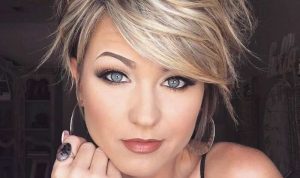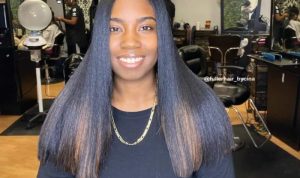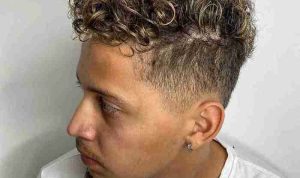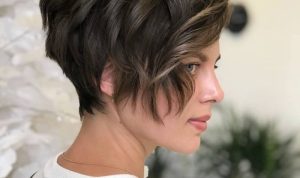Popular Hairstyles for Long Thick Hair
Hairstyles for long thick hair – Long, thick hair offers a versatile canvas for a wide array of hairstyles. Managing this hair type effectively requires understanding its unique characteristics and choosing styles that complement both your face shape and hair texture. This section explores popular hairstyle categories, offering insights into their suitability and visual descriptions.
Popular Hairstyle Categories
The following table categorizes popular hairstyles suitable for long, thick hair, considering various styles and their suitability for different face shapes and hair textures.
| Style Category | Hairstyle Examples | Face Shape Suitability | Hair Texture Suitability |
|---|---|---|---|
| Layered | Long layers, V-cut layers, feathered layers | Most face shapes; layers can soften angular features. | All hair textures; layers add movement and reduce bulk. |
| Straight | Sleek straight, center-parted straight, side-parted straight | Oval and long face shapes; straight styles can elongate the face. | Naturally straight or chemically straightened hair. |
| Curly | Long loose curls, defined curls, beach waves | Round and heart-shaped faces; curls add volume and softness. | Naturally curly or permed hair. |
| Braided | French braids, Dutch braids, fishtail braids, waterfall braids | Most face shapes; braids offer versatility and can be styled up or down. | All hair textures; braids can manage thick hair effectively. |
| Updos | High bun, low bun, messy bun, braided updo | Most face shapes; updos showcase necklines and can be dressed up or down. | All hair textures; updos are great for managing thick hair. |
| Ponytails | High ponytail, low ponytail, side ponytail, braided ponytail | Most face shapes; ponytails are versatile and easy to style. | All hair textures; ponytails can be sleek or textured. |
| Half-Up Styles | Half-up half-down, half-up with braids, half-up with twists | Most face shapes; half-up styles are flattering and practical. | All hair textures; adds elegance and keeps hair away from the face. |
| Space Buns | Classic space buns, messy space buns, braided space buns | Round and oval faces; adds a playful and youthful touch. | All hair textures; can be adapted for various lengths. |
| Twisted Styles | Rope twists, corkscrew twists, cinnabon twists | Most face shapes; adds texture and visual interest. | All hair textures; particularly effective on thicker hair. |
| Textured Waves | Beach waves, loose waves, defined waves | Most face shapes; adds volume and movement. | Naturally wavy or styled with curling tools. |
Layered hairstyles, for example, create movement and reduce bulk, making them suitable for all hair textures and most face shapes. A sleek, straight style might best suit oval or long faces, while curls can add volume and softness, particularly flattering on round or heart-shaped faces. Braids offer versatility, suitable for all hair textures and face shapes, allowing for both casual and formal looks.
Updos are ideal for showcasing necklines and are a practical way to manage thick hair for any occasion.
Styling Techniques for Long Thick Hair
Effective styling techniques are crucial for managing long, thick hair. These techniques, combined with the right products, can help achieve various looks while maintaining hair health.
- Brushing: Use a wide-tooth comb or a detangling brush to minimize breakage. Start from the ends and work your way up. Advantages: removes tangles and distributes natural oils. Disadvantages: can cause breakage if done aggressively; time-consuming for very thick hair. Best products: detangling spray, leave-in conditioner.
- Drying: Air drying is gentler, but using a diffuser attachment on a hairdryer can help reduce frizz. Advantages: less heat damage than blow-drying. Disadvantages: time-consuming; can result in frizz if not styled properly. Best products: leave-in conditioner, anti-frizz serum.
- Product Application: Use lightweight products to avoid weighing down the hair. Apply products evenly to prevent build-up. Advantages: enhances shine, manageability, and hold. Disadvantages: incorrect product choices can lead to build-up or weighed-down hair. Best products: lightweight leave-in conditioner, volumizing mousse, heat protectant spray.
- Sectioning: Divide hair into sections before styling to ensure even product distribution and prevent tangles. Advantages: easier to manage and style thick hair. Disadvantages: can be time-consuming. Best products: detangling spray, clips.
- Heat Styling: Use heat protectant sprays before using hot tools. Avoid excessive heat to prevent damage. Advantages: creates specific styles, long-lasting hold. Disadvantages: can cause damage if overused or without heat protection. Best products: heat protectant spray, styling cream.
Hairstyles for Specific Occasions
Hairstyles can be tailored to suit various occasions, from formal events to everyday wear. The following examples illustrate this versatility.
Formal Hairstyles, Hairstyles for long thick hair
- Elegant Updo: 1. Create a deep side part. 2. Curl the hair using a large barrel curling iron. 3.
Gather hair into a low bun, securing it with bobby pins. 4. Add a decorative hair accessory.
- Braided Crown: 1. Part hair down the middle. 2. Create two Dutch braids, starting from the temples. 3.
Bring the braids around the head to meet at the back, securing them with bobby pins. 4. Tuck the ends of the braids under the crown.
- Sleek Low Bun: 1. Straighten the hair using a flat iron. 2. Gather hair into a low ponytail at the nape of the neck. 3.
Twist the ponytail into a bun, securing it with bobby pins. 4. Apply hairspray for a polished look.
Casual Hairstyles

Source: lovehairstyles.com
- Messy Bun: Gather hair into a high or low ponytail, then twist and wrap it around itself, securing with bobby pins. Leave some loose strands for a relaxed look.
- Beach Waves: Apply texturizing spray to damp hair, then braid or twist sections of hair. Let it air dry or diffuse. Once dry, gently unravel the braids/twists for loose waves.
- Side Braid: Part hair to one side and create a loose braid, securing it with a hair tie. Pull out a few strands for a softer, more relaxed look.
Formal hairstyles typically involve more intricate steps and require more time and skill than casual styles. They often utilize heat styling tools and require more precise placement of pins and accessories. Casual hairstyles prioritize ease of styling and maintenance, often relying on simpler techniques and minimal product usage.
Addressing Common Challenges with Long Thick Hair
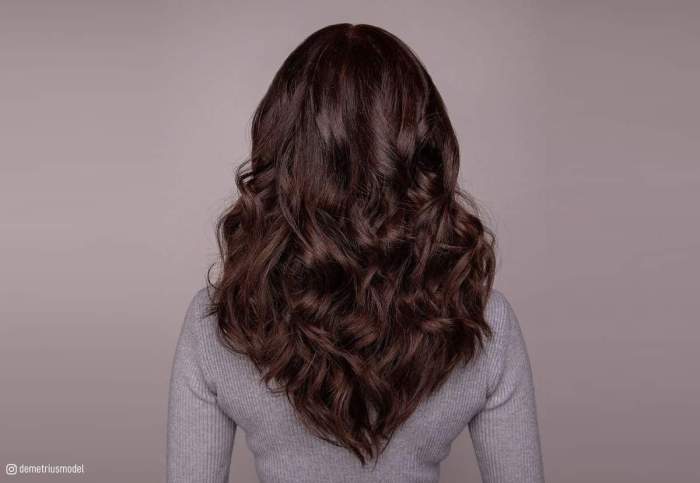
Source: latest-hairstyles.com
Long, thick hair presents certain challenges, but these can be addressed with proper care and techniques.
| Challenge | Solution | Product Recommendations | Preventative Measures |
|---|---|---|---|
| Frizz | Use anti-frizz products and avoid over-washing. | Anti-frizz serum, smoothing cream | Use a hydrating shampoo and conditioner, limit heat styling. |
| Tangles | Use a wide-tooth comb or detangling brush, and apply a leave-in conditioner. | Leave-in conditioner, detangling spray | Regularly brush or comb hair, avoid sleeping with wet hair. |
| Breakage | Be gentle when brushing and styling, and use hair masks to strengthen hair. | Hair mask, strengthening serum | Minimize heat styling, trim split ends regularly. |
Hairstyles Based on Hair Texture
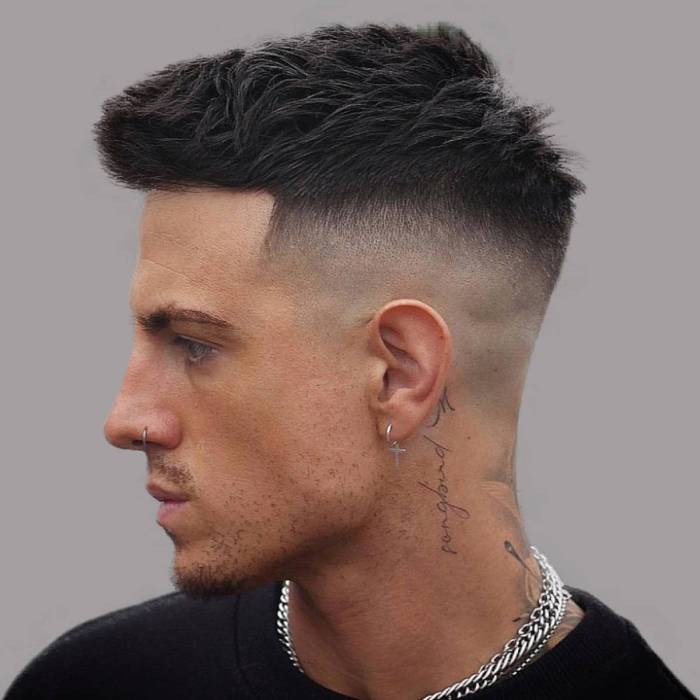
Source: latest-hairstyles.com
Hair texture significantly influences styling choices and techniques. The following Artikels hairstyles suitable for different hair textures.
- Straight Hair: Sleek ponytails, straight styles with center or side part, braids (French, Dutch, fishtail), low buns, high buns.
- Wavy Hair: Beach waves, loose curls, half-up half-down styles, braided updos, messy buns.
- Curly Hair: Defined curls, afro, braids (box braids, cornrows), updos (high bun, low bun), twist-outs.
Straight hair generally requires less styling time and product, while wavy and curly hair may benefit from products that enhance definition and reduce frizz. Curly hair often needs more specialized products and techniques to maintain its shape and manage its volume.
Question & Answer Hub
How often should I wash my long, thick hair?
Washing frequency depends on your hair type and scalp. Generally, every 2-3 days is recommended to avoid over-drying.
Managing long, thick hair can be a challenge, requiring time and effort for styling. However, if you’re considering a change, it’s worth exploring simpler options; perhaps you’d find inspiration in short and easy hairstyles for short hair , which can offer a refreshing break. Ultimately, the best hairstyle depends on your personal preference and lifestyle, whether you embrace the volume of long hair or opt for the convenience of a shorter cut.
What’s the best way to detangle long, thick hair?
Use a wide-tooth comb, starting from the ends and working your way up to the roots, to minimize breakage. Apply a detangling spray for easier combing.
How can I prevent breakage with long, thick hair?
Use gentle hair ties, avoid harsh brushing, and trim split ends regularly. Conditioning treatments and protective hairstyles also help.
Are there specific haircuts that add volume to long, thick hair?
Layered cuts are excellent for adding volume and movement to thick hair, preventing it from looking heavy or flat.
What products should I avoid if I have long, thick hair prone to frizz?
Avoid products containing alcohol, which can dry out hair and exacerbate frizz. Opt for moisturizing and smoothing products instead.


